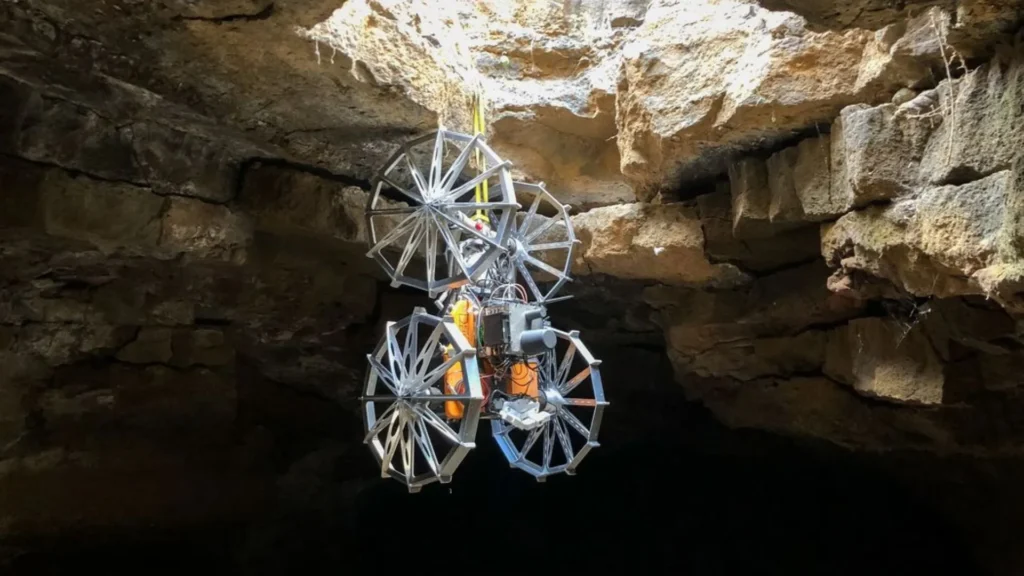A European team led by the DFKI Robotics Innovation Center and the University of Bremen has presented a mission concept that proposes the use of three autonomous robots to investigate hidden lava tubes on the Moon.
The study, published in the journal Science Roboticshighlights a four-stage strategy that begins with exterior reconnaissance of a lunar skylight and culminates with autonomous mapping of a cave interior. These subterranean structures, formed by ancient lava flows, are ideal candidates for future settlement due to their natural ability to shield against radiation and micro-impacts.
Field test: Lanzarote as a natural laboratory
The team tested this concept in real-world conditions on the volcanic island of Lanzarote, Canary Islands, a geological environment that simulates well the characteristics of the Moon. There, the SherpaTT, Coyote III and LUVMI-X robots performed cooperative maneuvers that included external mapping, sensor placement, controlled descent and autonomous exploration with 3D mapping.
During the third phase, SherpaTT descended into Coyote III using a winch system. Once released, the winch traveled through the tunnel to generate a detailed 3D model of the subway environment.

This exercise demonstrated the technical feasibility of the approach and underlined the value of teamwork between different robotic platforms.
Robot collaboration could enable the reach and exploration of unknown cavities. Source: German Research Center for Artificial Intelligence
The importance of autonomous robots
One of the biggest challenges observed was the need for full autonomy in remote environments without access to direct communications. The success of the Lanzarote operation reinforces the importance of advancing autonomous navigation algorithms and machine-to-machine cooperation.
In addition, the test highlighted practical limitations such as sensor interference due to humidity or lack of field validation data. However, these difficulties are part of the technological maturation process necessary before a deployment on the lunar surface or even on Mars.
This type of mission will serve as an initial step to evaluate safe areas where future bases can be established. They could also facilitate the detection of environments conducive to finding evidence of microbial life.
Source and photos: DFKI Center for Innovation in Robotics


